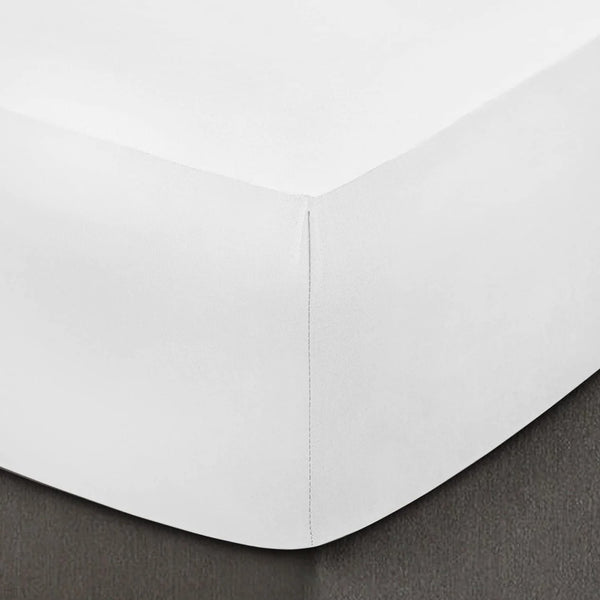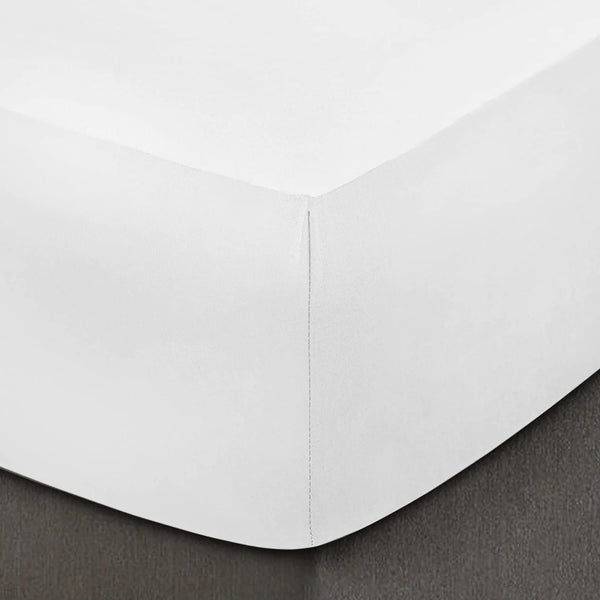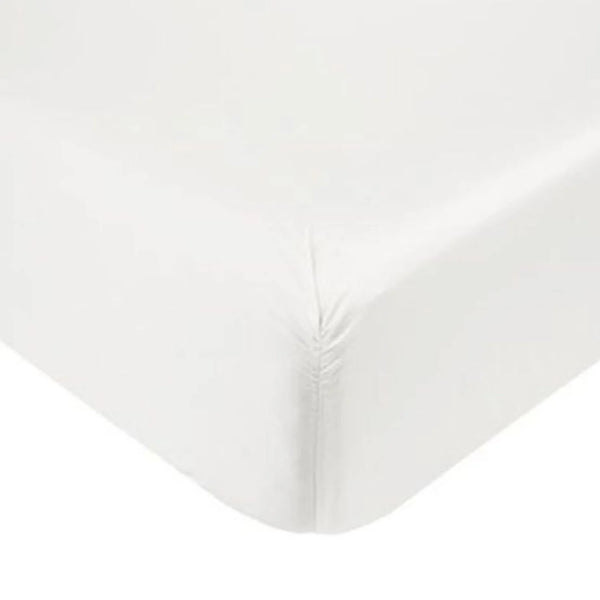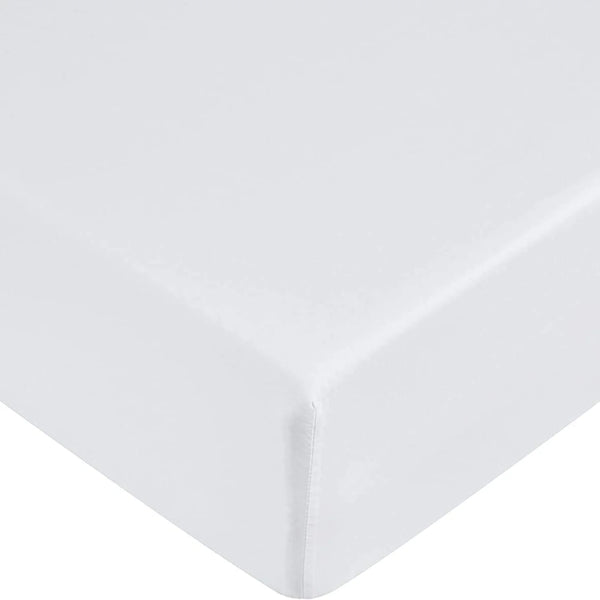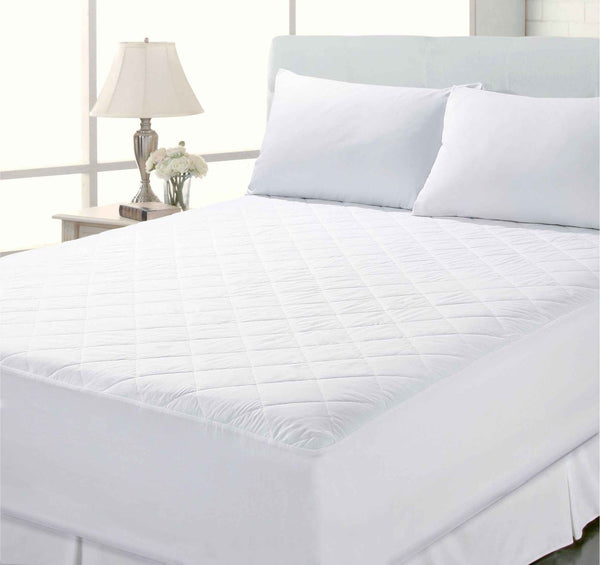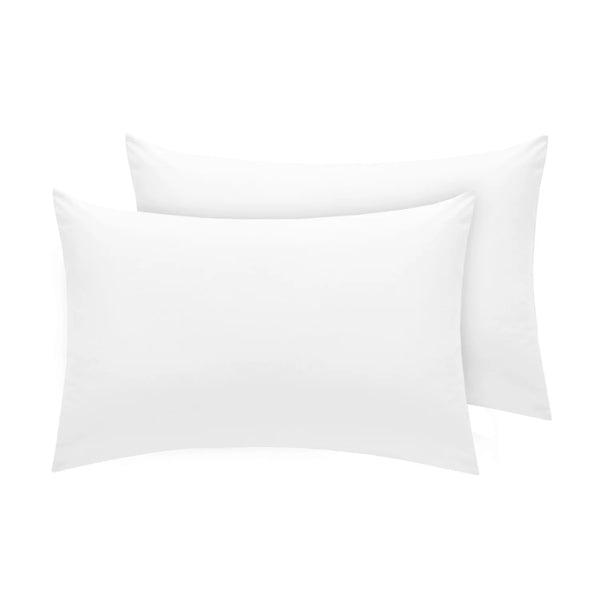Keeping your bed sheets clean isn’t just a routine chore—it’s an essential practice for maintaining hygiene, skin health, and quality sleep. At Dtex Homes, a leading bedding brand in the UK, we understand the value of a well-kept bed. This guide will walk you through how to wash bed sheets properly using expert advice, modern laundry techniques, and best practices tailored to both white sheets and coloured bed linen.
Why Washing Your Bed Sheets Correctly Matters
The Link Between Clean Bedding and Your Health
Your bed sheets collect more than just dust—they harbour dead skin cells, body oils, dust mites and bacteria. Without frequent washing, these can cause various health concerns, including allergic reactions and respiratory issues.
Clean Bedding Promotes Better Health
- Reduces exposure to harmful microbes and allergens
- Supports immune function and better sleep
- Helps prevent skin conditions such as acne and eczema
Did You Know?
According to the CDC, clean linens are vital for infection prevention, especially for those with allergies or weakened immune systems.
How Dirty Sheets Impact Sleep Quality
Unwashed sheets can lead to discomfort and restless sleep. Trapped allergens and odours disrupt REM cycles and cause overheating.
Signs Your Sheets Are Affecting Your Sleep
- Persistent sneezing or coughing at night
- Night sweats or skin irritation
- Feeling unrested even after 8 hours of sleep
Skin Issues, Allergies and Hygiene Concerns
Dirty bed linen can be a breeding ground for bacteria such as Staphylococcus aureus and fungi, leading to infections, breakouts, and even flare-ups of chronic conditions like eczema.
At-Risk Individuals
- People with asthma or hay fever
- Pet owners
- Infants and elderly
- Those with sensitive or acne-prone skin
Benefits of Regular Sheet Maintenance
Routine washing keeps sheets fresh, soft, and long-lasting. It also enhances your overall sleep hygiene and helps you get more value from your investment in high-quality bedding.
Advantages of Washing Bed Sheets Weekly
- Preserves fabric integrity
- Minimizes allergens and bacteria
- Keeps your bedroom smelling fresh
Advantages of Washing Bed Sheets Weekly
- Preserves fabric integrity
- Minimizes allergens and bacteria
- Keeps your bedroom smelling fresh
How Bed Sheets Are Designed for Easy Care
At Dtex Homes, our sheets are made from premium cotton blends that resist shrinkage, hold colour, and are machine washable. Whether you’re dealing with everyday grime or tougher stains, our products are built to handle regular washes while staying luxuriously soft.
Why Choose Dtex Homes Sheets?
- Pre-treated for colour fastness
- Easy to wash at 40–60°C depending on fabric type
- Designed for sensitive skin
How Often Should You Wash Bed Sheets

Recommended Washing Frequency (Everyday Use)
For most households, sheets should be washed once every 7 days. This helps prevent buildup of oils, sweat, and allergens.
High-Use Households
- Active individuals or gym-goers: every 3–4 days
- Children and babies: every 2–3 days
How Often to Wash Bed Sheets If You Have Allergies or Asthma
If you suffer from asthma, hay fever, or eczema, wash your sheets at least twice a week. Use a hot cycle (60°C) to eliminate dust mites and allergens effectively.
Use Hypoallergenic Detergents
Choose a fragrance-free, non-bio detergent to reduce irritation. Avoid fabric softeners, as they can trap allergens in the fibres.
How Often Should You Wash Bed Sheets in Summer vs Winter?
In warmer months, increase washing frequency to once every 4–5 days due to excessive sweat. In winter, weekly washing is usually sufficient unless you’re ill or suffer from skin conditions.
Bed Sheets and Pets – Washing Frequency Tips
If your pets sleep on the bed, wash your sheets every 3–4 days. Pet dander, saliva, and hair can quickly compromise sheet cleanliness.
Best Practices for Pet Owners
- Use a lint roller before washing
- Opt for high-temperature cycles to eliminate bacteria
- Wash blankets and throws separately
Changing Sheets vs Washing – What’s the Difference?
Changing your sheets means replacing them with a clean set. But it’s the actual washing that eliminates harmful microbes.
Sheet Rotation Strategy
Have at least three sets: one on the bed, one in the wash, and one ready to go. This makes it easier to keep up with your washing schedule.
Preparing Your Bed Sheets for Washing

Step 1: Remove and Separate Sheets by Colour and Fabric
Separate your white bed sheets from darker or coloured linens. Also, wash cotton, linen, and delicate fabrics like silk separately to avoid damage.
Why It Matters
This step helps maintain brightness in white sheets and prevents dye transfer.
Step 2: Check the Care Label Instructions
Before tossing your sheets into the washing machine, always read the label. It tells you:
- Recommended temperature (e.g., 40°C, 60°C)
- Machine settings (delicate, regular, hot)
- Drying instructions
Step 3: Pre-Treat Stains Like Blood, Oil, or Makeup
Use a gentle stain remover spray or homemade solution (baking soda + water paste) for visible stains. Always spot test first!
Common Stains & Treatments
- Blood: Cold water + enzyme-based detergent
- Body oils: Warm water soak + mild dish soap
- Makeup: Micellar water or gentle makeup remover
Step 4: Turn Pillowcases and Sheets Inside Out
This protects the outer fabric and ensures thorough cleaning of areas most exposed to skin and sweat.
Fabric Preservation Tip
Turning inside out prevents fading and pilling over repeated washes.
Step 5: Avoid Mixing Towels or Heavy Fabrics
Towels and heavy fabrics can create friction that wears out bed linen. Always wash sheets with similarly lightweight fabrics.
Why Avoid Towels?
- Towels shed lint that clings to sheets
- Can unbalance the drum in your washing machine
- Dry unevenly compared to sheets
What Temperature Should You Wash Bed Sheets
Understanding the right temperature to wash bed sheets is crucial for both cleanliness and fabric preservation. Whether you're dealing with cotton, linen, or silk sheets, using the right heat level helps kill bacteria, remove stains, and extend the lifespan of your linens.

Hot vs Cold Wash – What's Best for Hygiene and Fabric Life
There’s a balance between sanitization and fabric care when choosing between hot and cold water.
Hot Water (60°C or higher)
- Best for killing dust mites and allergens
- Ideal for people with allergies or compromised immunity
- May cause shrinking or wear on delicate fabrics
Cold Water (30–40°C)
- Preserves fabric color and elasticity
- Eco-friendly and energy-efficient
- Less effective at removing body oils and bacteria unless combined with disinfecting detergent
Recommended Temperatures for Cotton, Silk, and Linen
- Cotton bed sheets: 40°C–60°C (with mild detergent)
- Silk sheets: 30°C (delicate cycle, no spin)
- Linen sheets: 40°C (avoid fabric softeners)
Fabric-Specific Temperature Guidelines
Each material responds differently to heat. Dtex Homes sheets are engineered to retain softness and strength even after multiple washes.
Can You Wash Bed Sheets at 60°C Safely
Yes, but only if the care label supports it. A 60°C wash is ideal for white bed sheets, allergy sufferers, or during flu season. However, always double-check if your fabric can handle high heat without damage.
When to Use 60°C:
- After illness
- For baby bedding
- When dealing with dust mite infestations
What Temperature to Wash White Sheets and Bed Linen
To keep white sheets white, wash them at 60°C using an oxygen-based bleach (never chlorine bleach, which can yellow fabrics).
Additional Whitening Tips:
- Use bicarbonate soda and vinegar pre-soaks
- Dry in direct sunlight to naturally bleach out discoloration
Ideal Temperature to Wash Cotton Bed Sheets
We recommend washing premium cotton sheets at 40°C–60°C, depending on usage:
- 40°C: Regular weekly cleaning
- 60°C: For deep cleaning or post-illness laundry
How to Wash Bed Sheets in a Washing Machine
Washing bed sheets in a machine sounds simple, but there are details that can make or break the quality of your wash. From spin speed to cycle settings, each choice affects how clean and soft your sheets turn out.
Choosing the Right Cycle: Delicate, Normal, or Heavy-Duty
Choose your cycle based on fabric type and how soiled your sheets are.
- Delicate: Ideal for silk or lace-trimmed sheets
- Normal: Best for everyday cotton and linen sheets
- Heavy-Duty: Reserved for extreme stains or post-illness cleaning
What Spin Speed to Use for Bed Sheets
Use a moderate spin speed—typically around 800–1000 RPM for cotton sheets. High-speed spins may tangle or stretch fabric, especially in king-size sheets.
Spin Speed Guide:
- 600 RPM: For silk or delicate blends
- 1000–1200 RPM: For cotton or linen
Should You Wash Bed Sheets Separately from Other Clothes
Yes. Always wash bed sheets separately from jeans, towels, and zippers to avoid abrasion and lint transfer.
Why It Matters:
- Protects delicate fibres
- Ensures even detergent distribution
- Prevents overloading the drum
Best Washing Machine Settings for Different Fabrics
| Fabric | Temperature | Cycle | Spin |
|---|---|---|---|
| Cotton | 40–60°C | Normal | 1000 RPM |
| Silk | 30°C | Delicate | 600 RPM |
| Linen | 40°C | Normal | 800 RPM |
How to Wash Bed Sheets in the UK with Hard Water Considerations
Hard water is common in many parts of the UK and can cause buildup in fabrics. Use a water softener or a vinegar rinse every few washes to maintain sheet softness and prevent grey residue.
Recommended Products:
- Water softener tablets
- White vinegar (add to fabric softener compartment)
Step-by-Step Guide: Washing Bed Sheets Like a Pro

Step 1: Load Your Washing Machine Correctly
Don’t overstuff the drum. Sheets need room to move freely. Wash similar fabrics and colours together.
Load Tip:
For a standard UK washer, no more than one full bed set (fitted sheet, flat sheet, and two pillowcases) per load.
Step 2: Add Detergent – How Much Is Too Much
Use the right amount of detergent based on load size and water hardness. Too much detergent can leave residue, while too little won’t clean properly.
Rule of Thumb:
- Soft water: Use less detergent
- Hard water: Use slightly more, or opt for a hard-water formula
Step 3: Add Fabric Conditioner (Yes or No?)
Fabric softeners can reduce sheet breathability and absorbency. Use only occasionally, or opt for natural alternatives like white vinegar.
Safe Alternatives:
- Wool dryer balls (for drying phase)
- White vinegar (during rinse cycle)
Step 4: Choose the Correct Settings
Match the wash cycle and temperature to the sheet type (see fabric guide above). For cotton sheets, a 40–60°C normal wash works best.
Step 5: Start Wash and Post-Wash Inspection
After washing, check for stains. If some remain, don’t dry the sheet—this will set the stain. Re-treat and rewash if necessary.
How to Dry Bed Sheets Without Damaging Them
Drying your bed sheets correctly is just as important as washing them. Improper drying can lead to shrinkage, fabric damage, or loss of softness — especially in high-quality sheets like those from Dtex Homes UK.

Using a Tumble Dryer vs Line Drying
Each drying method has its pros and cons. The right choice often depends on your sheet fabric and weather conditions in the UK.
Tumble Dryer
- Faster drying time, especially in cold or wet climates
- Convenient for busy households
- Use on a low to medium heat setting to protect fibres
Line Drying
- Eco-friendly and cost-effective
- Sunlight naturally bleaches and sanitises white sheets
- Can leave sheets feeling crisp and fresh
Best Dryer Settings for Cotton and Linen Sheets
Always consult the care label. For cotton sheets, we recommend:
- Temperature: Low or medium heat
- Cycle: Gentle or cotton cycle
- Remove while slightly damp to prevent wrinkles and shrinkage
How to Prevent Over-Drying and Shrinking
Over-drying is a common cause of sheet damage. Here's how to avoid it:
Pro Tips:
- Use a moisture sensor dryer if available
- Set a timer (20–30 minutes for most sheets)
- Remove sheets promptly after drying
Should You Use Dryer Balls or Fabric Sheets?
Both options offer benefits, but with key differences:
- Wool dryer balls: Reduce static, soften fabric naturally, eco-friendly
- Fabric sheets: Add fragrance and reduce wrinkles but may leave residue on sensitive skin
How Drying Luxury Sheets
For best results, we advise our customers to:
- Line dry when possible in fresh air
- If using a dryer, set to low heat and remove when slightly damp
- Iron lightly with steam if needed to restore softness
Common Mistakes to Avoid When Washing Sheets

Even with the best intentions, it's easy to make mistakes that damage your bed sheets. Let’s look at common errors to steer clear of when doing your bedsheet laundry.
Overloading the Washing Machine
This is one of the most frequent laundry errors. Overcrowding your washer:
- Prevents proper detergent distribution
- Reduces agitation and cleaning effectiveness
- Can stretch or tear sheet fibres
Using Too Much Detergent or Bleach
Excess detergent can leave residue, especially in the UK's hard water regions. Bleach, when overused, can weaken fibres and discolor fabric.
Best Practice:
- Use the detergent amount suggested by the label
- Opt for oxygen bleach over chlorine bleach for white sheets
Washing Whites with Colours
Avoid mixing white bed sheets with dark colours. Even "colour-safe" detergents can’t always prevent dye transfer.
Always:
- Sort sheets by light, dark, and delicate
- Wash new coloured sheets separately for the first few cycles
Ignoring Care Labels and Temperature Guidelines
Every fabric has its own wash requirements. Not following the care label can lead to:
- Shrinkage or distortion
- Colour fading
- Weakened fibres
Not Drying Sheets Properly
Improper drying can be just as damaging as incorrect washing. Avoid drying on high heat and leaving sheets in the dryer too long.
How to Wash Different Types of Bed Sheets
Each material demands a specific approach. Whether it's natural fibres or synthetic blends, here's how to wash different bed sheets properly.

Cotton Sheets
Cotton is durable and breathable — ideal for year-round use. At Dtex Homes, our luxury cotton bed sheets are engineered for easy care.
Washing Instructions:
- Wash at 40–60°C
- Use gentle or normal cycle
- Avoid bleach; use bicarbonate soda for whitening
Linen Sheets
Linen is a natural, moisture-wicking fibre but can be sensitive to heat.
Care Tips:
- Wash at 30–40°C with a mild detergent
- Line dry if possible; avoid high heat in dryer
Silk or Satin Sheets
These luxurious fabrics need special attention.
Cleaning Method:
- Hand wash or use delicate cycle at 30°C
- Use silk-safe detergent
- Avoid wringing; air dry flat
Polyester and Microfiber Sheets
These are wrinkle-resistant and easy-care but prone to static and build-up.
Best Practice:
- Wash at 30–40°C
- Avoid fabric softeners, which can clog microfibres
How to Wash Fitted vs Flat Sheets
Fitted sheets tend to trap more body oils and sweat due to their close contact with the mattress. Here’s how to manage both types:
Washing Fitted Sheets:
- Use warm water (40–60°C) for thorough cleaning
- Dry inside out to reduce lint and preserve elasticity
Washing Flat Sheets:
- Shake before drying to reduce wrinkles
- Fold promptly to avoid creases
How to Keep Bed Sheets Softer for Longer

Choosing the Right Detergent for Softness
Maintaining the softness of your bed sheets starts with choosing the right detergent. At Dtex Homes, we recommend using a mild, non-bio detergent designed specifically for delicate fabrics. These detergents help preserve natural fibres and prevent harsh chemicals from breaking down your sheets’ texture.
Why Mild Detergents Matter
Harsh detergents can strip cotton, linen, and silk sheets of their natural oils, leaving them rough and worn. Non-bio detergents are free from enzymes that can damage delicate fabrics and irritate sensitive skin.
Tips for Softening Naturally After Washes
Instead of relying on chemical fabric softeners, try these natural methods for long-lasting softness:
- Add half a cup of white vinegar to the rinse cycle to break down detergent residue and soften fibres naturally.
- Use wool dryer balls in the tumble dryer to fluff sheets and reduce drying time without chemicals.
- Shake out sheets before drying to help loosen fibres and improve softness.
Natural Softening Benefits
These methods also reduce buildup on sheets, helping maintain their breathability and extending their lifespan.
Why Fabric Softeners May Not Always Be Ideal
While fabric softeners add an initial softness and scent, they often leave a waxy coating that reduces absorbency and can irritate sensitive skin. For allergy sufferers or people with asthma, this residue may cause discomfort or worsen symptoms.
Ironing or Steaming Your Bed Sheets
Ironing or steaming your sheets not only removes wrinkles but also helps maintain the smoothness and softness of the fabric.
Steaming Advantages
Steaming gently relaxes fibres without risk of scorching and helps maintain fabric integrity over time.
How to Store Bed Sheets to Maintain Softness and Fragrance
Proper storage is key to keeping your sheets fresh and soft between uses.
Storage Best Practices
- Fold sheets neatly and store in a cool, dry place away from direct sunlight.
- Add natural scent sachets, such as lavender or cedarwood, to maintain fragrance.
- Rotate sheet sets regularly to avoid stiffness from prolonged storage.
Extra Tips for Clean and Fresh Bedding
Use of Essential Oils or Linen Sprays
Boost freshness with the use of essential oils or linen sprays. Adding a few drops of lavender or eucalyptus oil to your rinse cycle or applying a linen spray post-wash can create a calming sleep environment.
How to Rotate Your Sheet Sets for Longevity
Keep 2–3 sets of sheets in rotation to reduce wear and allow each set adequate time to air out between uses, prolonging their lifespan and maintaining their softness.
Stain Removal Hacks for Blood, Wine, or Sweat
- Blood stains: Rinse with cold water immediately and treat with hydrogen peroxide.
- Wine stains: Soak in cold water mixed with salt, then wash promptly.
- Sweat stains: Apply a baking soda and vinegar paste before washing.
Proactive Stain Care
Treating stains promptly prevents permanent damage and keeps your sheets looking fresh longer.
Anti-Bacterial Rinse Options and Allergy Care
For those with allergies or sensitivities, consider adding a hypoallergenic laundry sanitizer or eucalyptus rinse during the final wash cycle. This helps eliminate bacteria and allergens without harsh chemicals.
Washing Mattress Protectors, Pillowcases, and Duvet Covers
- Pillowcases: Wash every 1–2 weeks to reduce oil and allergen buildup.
- Mattress protectors: Clean every 4–6 weeks at 60°C for hygiene.
- Duvet covers: Wash weekly alongside your bed sheets.
Eco-Friendly Sheet Washing Tips (UK Focus)
How to Save Water and Energy When Washing Bedding
- Wash full loads to maximise water and energy efficiency.
- Use eco-settings on your washing machine designed to reduce water and power usage.
- Choose shorter wash cycles when sheets are lightly soiled.
Recommended Eco Detergents and Sheet Care
Dtex Homes recommends environmentally-friendly detergents such as:
- Bio-D Laundry Liquid
- Smol Eco Capsules
- Ecover Zero Non-Bio Laundry Liquid
Washing Bed Sheets at Lower Temperatures Safely
Modern detergents allow you to wash sheets effectively at 30–40°C, reducing energy use while still maintaining hygiene.
Tips for Low-Temperature Washing
- Pre-treat stains for better results.
- Use a detergent with built-in enzymes or antibacterial properties.
Sustainable Practices Endorsed by Dtex Homes
Dtex Homes proudly supports sustainable bedding care, including:
- OEKO-TEX® certified materials ensuring chemical safety
- Encouraging cold water washing to save energy
- Minimising packaging waste and using recyclable materials
FAQs
Can You Wash Sheets with Towels?
While possible, it’s best to avoid washing sheets with towels. Towels tend to produce lint and have rougher textures, which can cause pilling and wear on delicate sheets. For best results, wash sheets separately or with similarly lightweight fabrics.
Should I Wash New Sheets Before Using Them?
Absolutely. New sheets often contain chemical finishes from manufacturing and packaging. Washing before use removes these residues, softens the fabric, and improves comfort.
How to Get Yellow Stains Out of White Sheets?
- Soak the sheets in a mixture of baking soda and hydrogen peroxide for several hours.
- Use oxygen-based bleach (never chlorine bleach) to avoid fabric damage.
- Wash at 60°C with a whitening detergent for effective stain removal.
Can I Hand Wash My Bed Sheets?
Yes, hand washing is gentle and effective, especially for delicate fabrics like silk or linen. Use cool to lukewarm water, a mild detergent, and rinse thoroughly. Avoid wringing sheets to prevent fabric distortion.
What Setting to Wash Bed Sheets on for Best Results?
Use a normal or cotton cycle for most sheets. For delicate fabrics such as silk or fine linen, opt for a gentle or delicate cycle with lower spin speeds. Always consult the care label for specific instructions.












